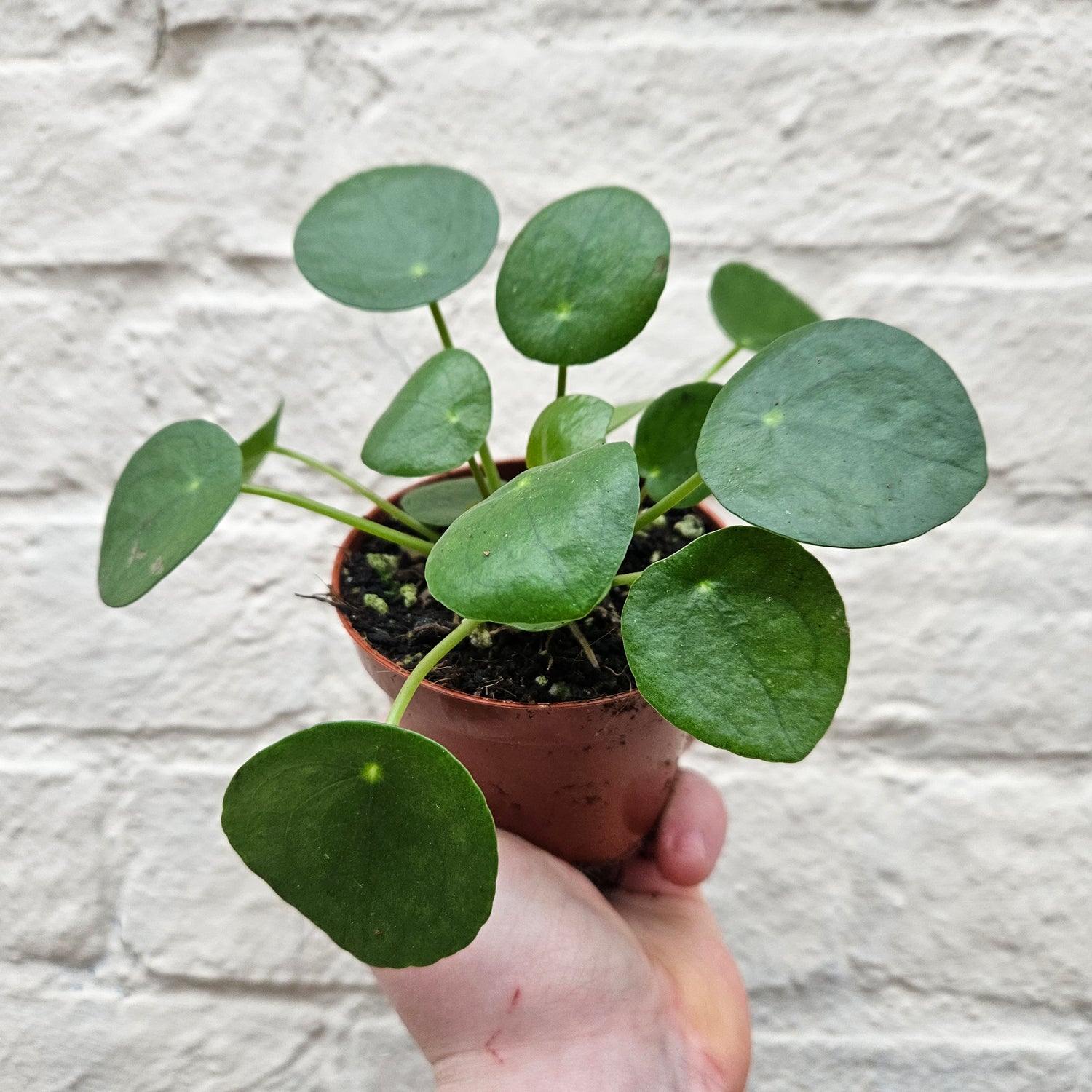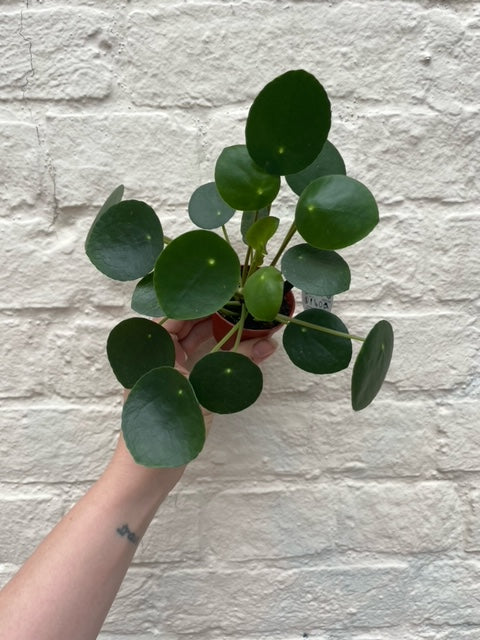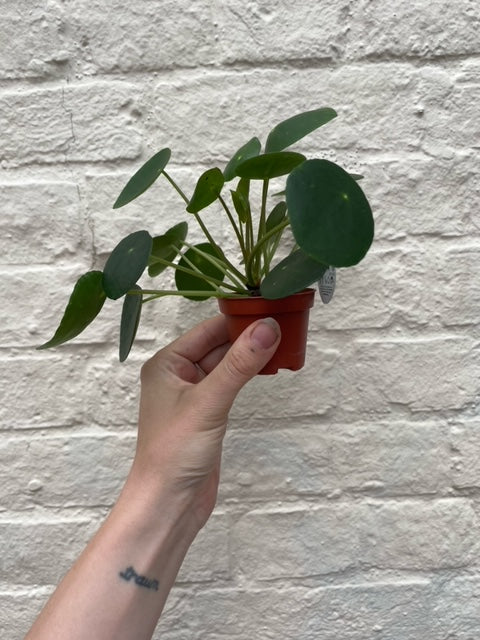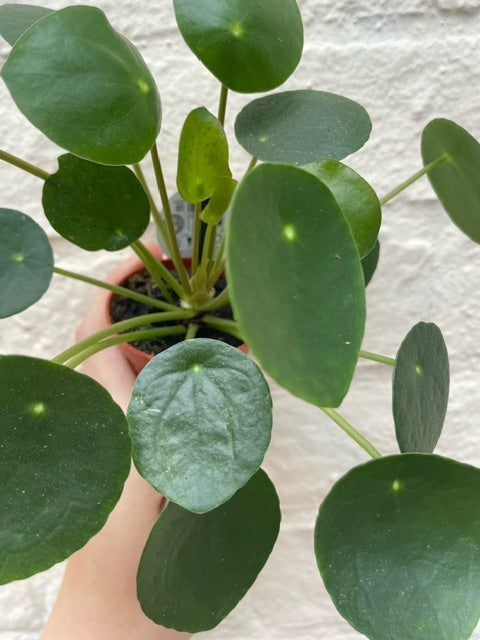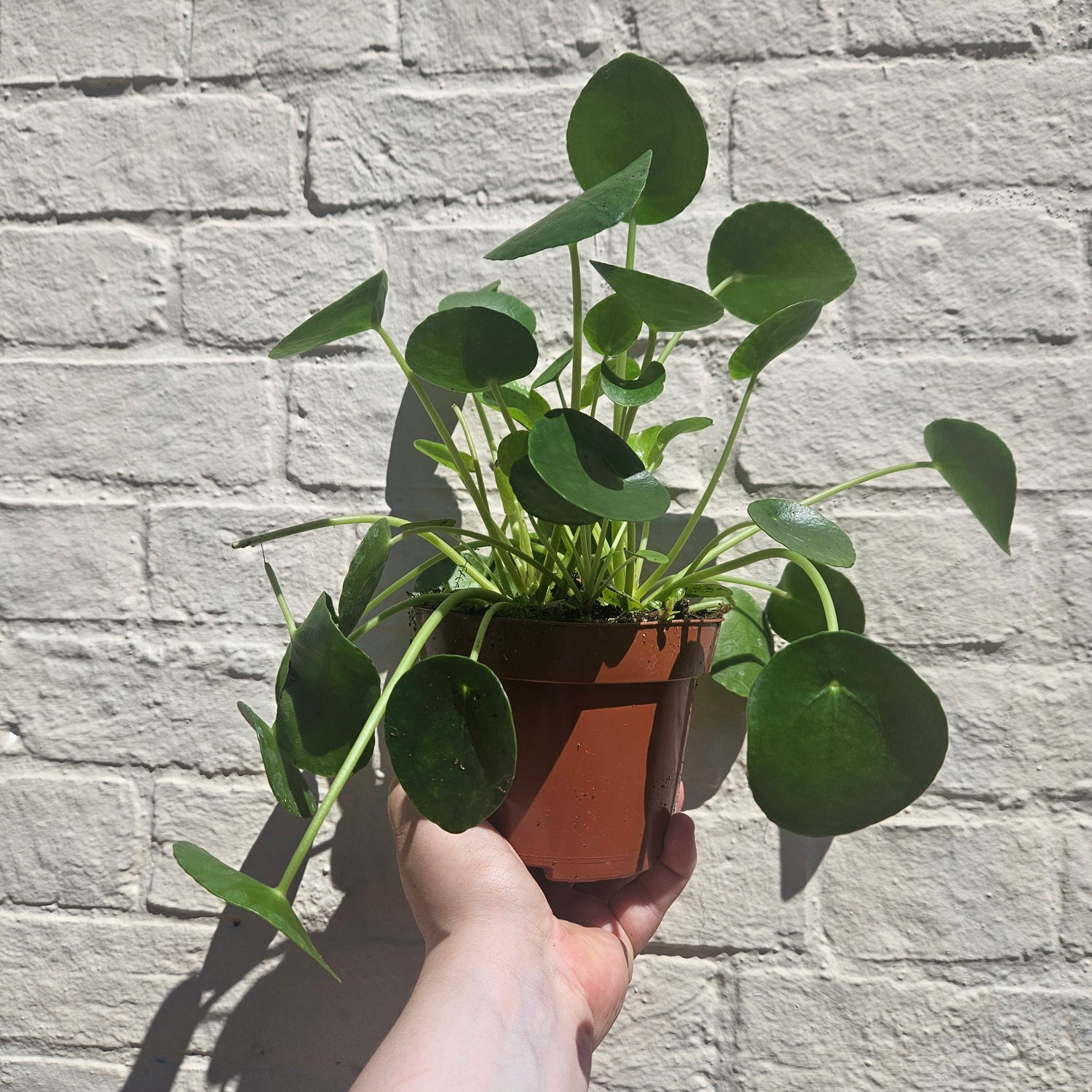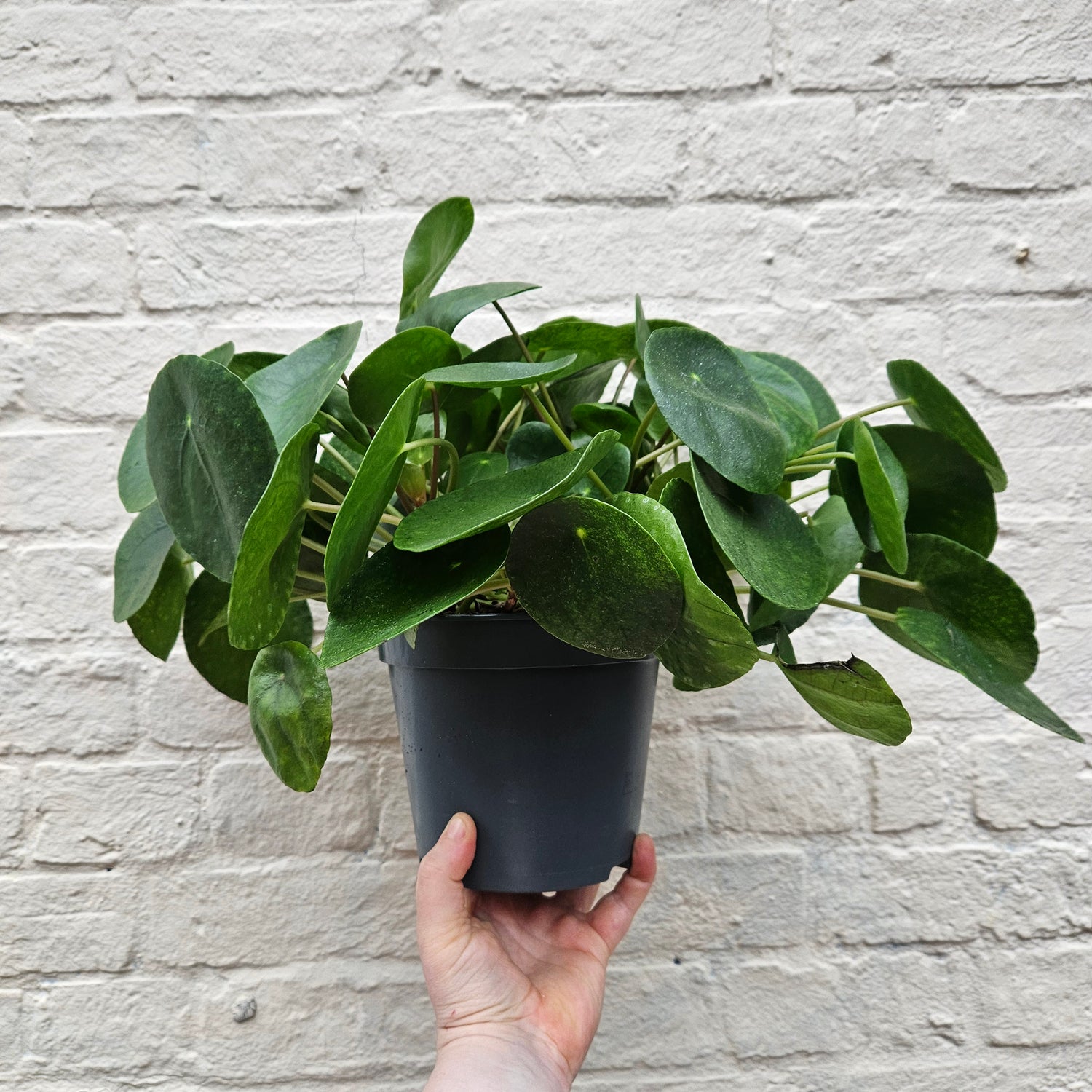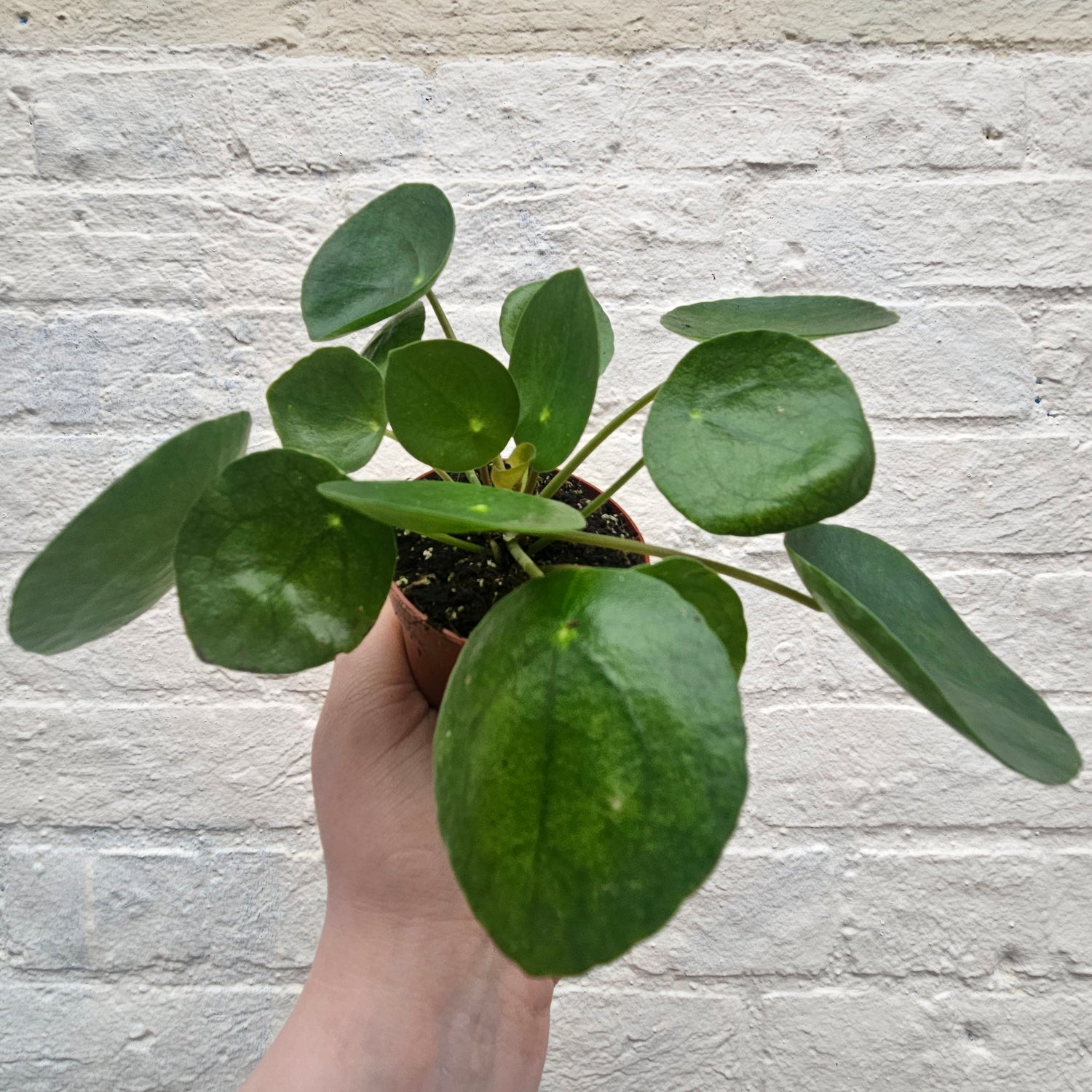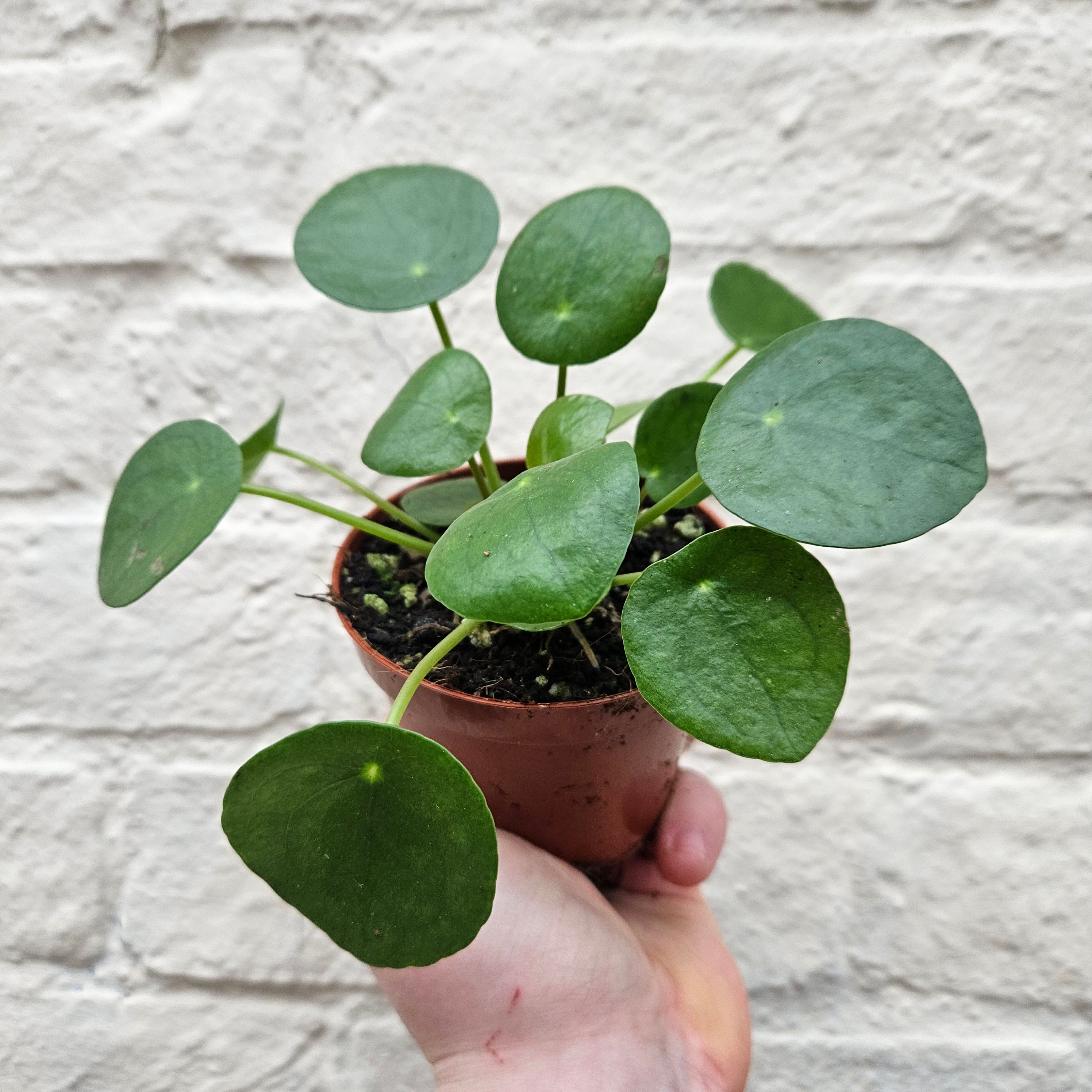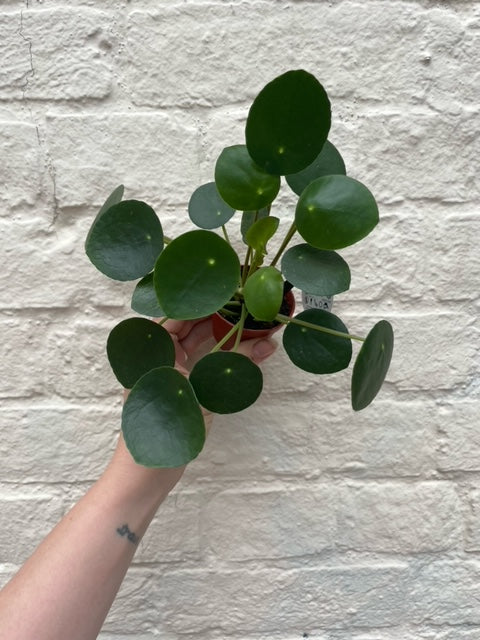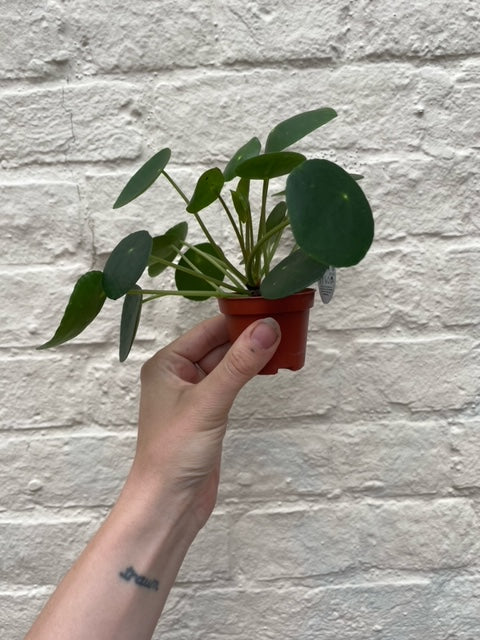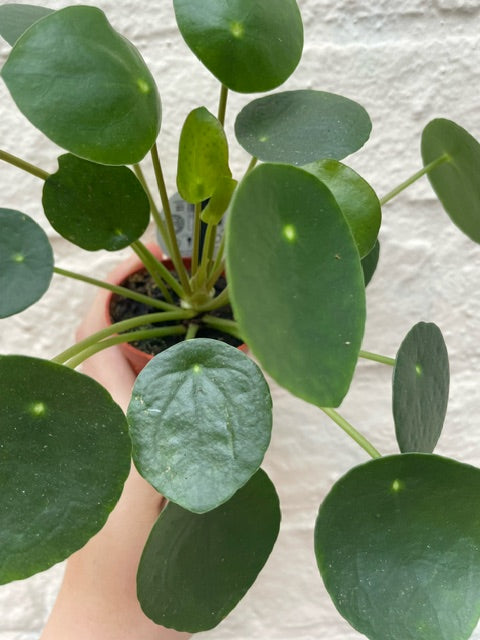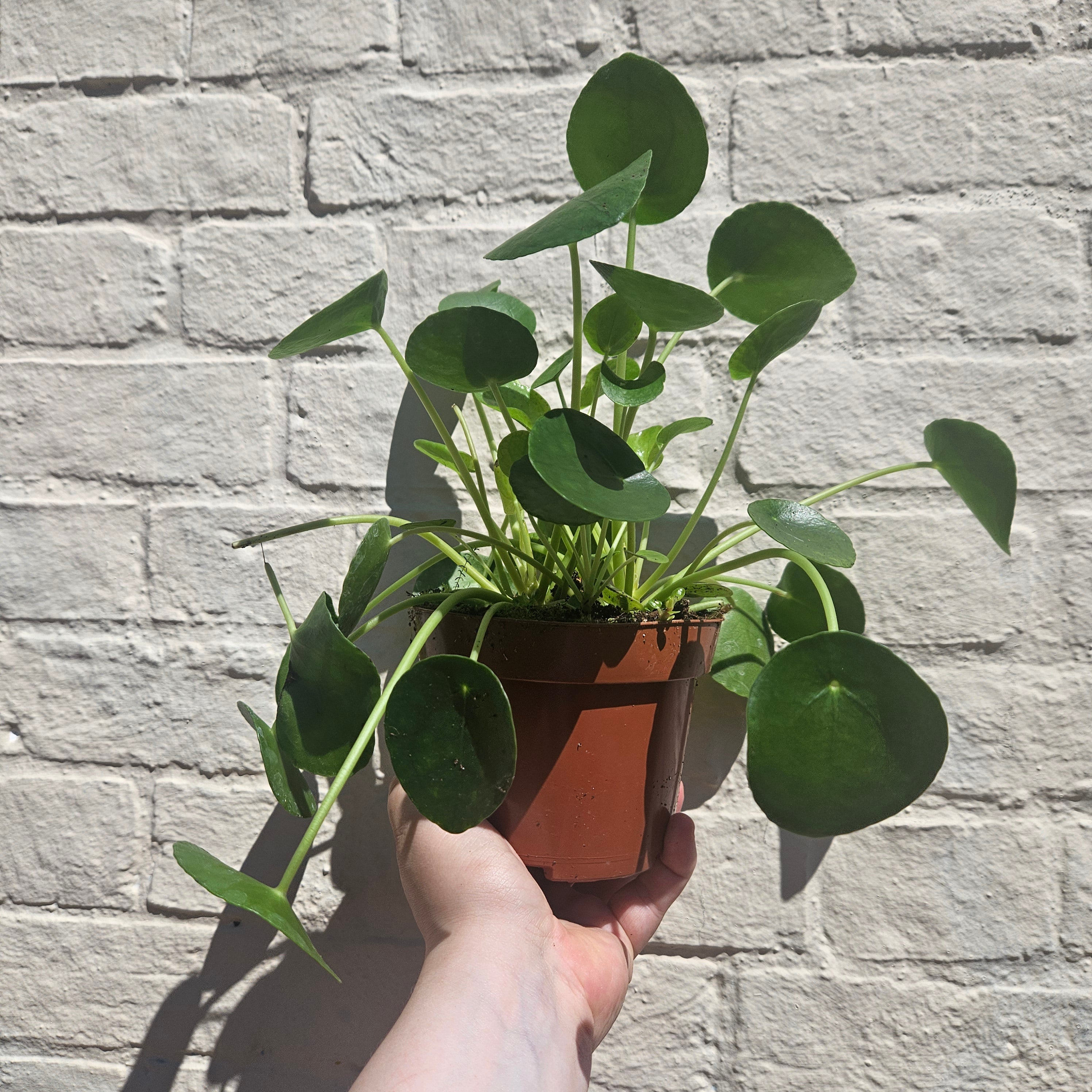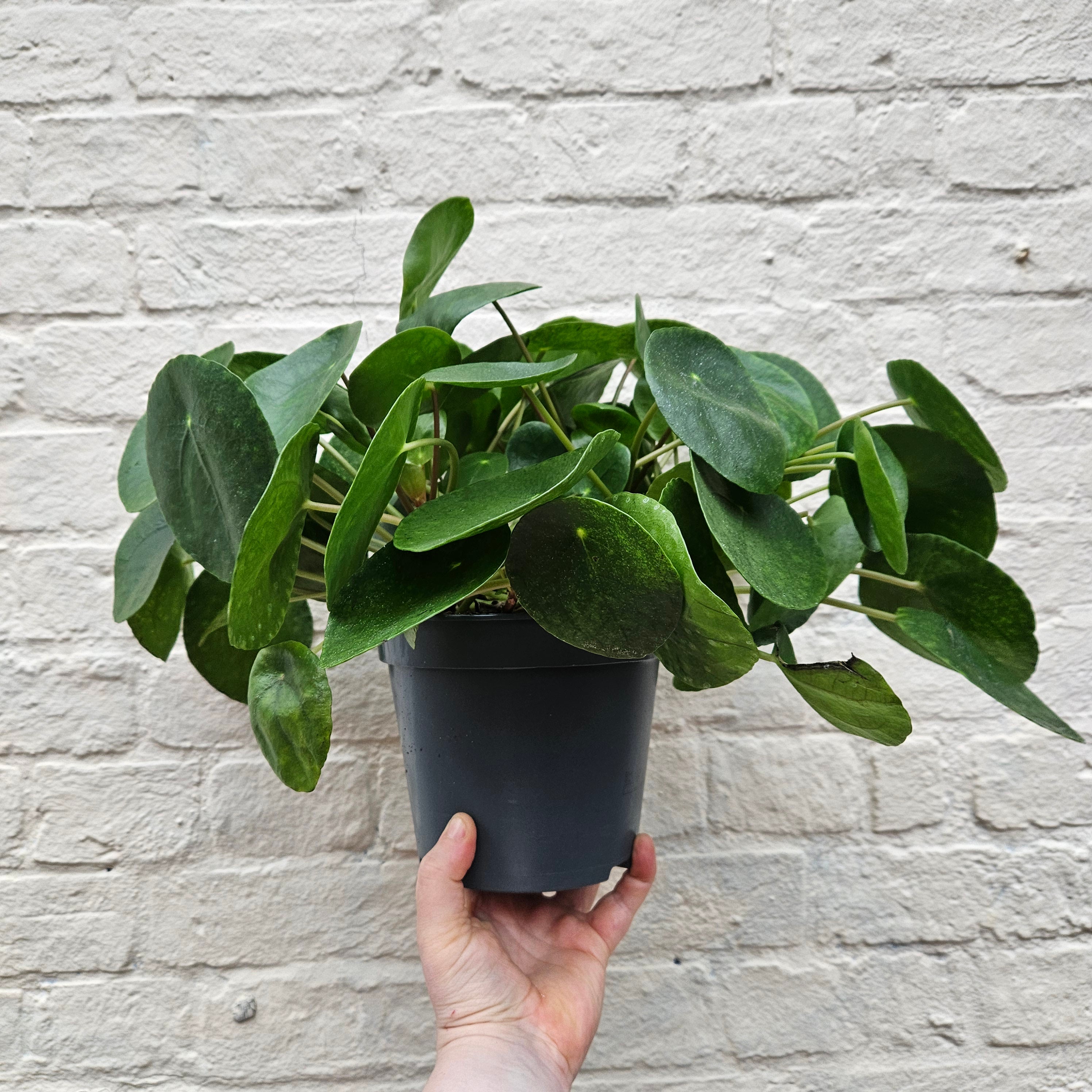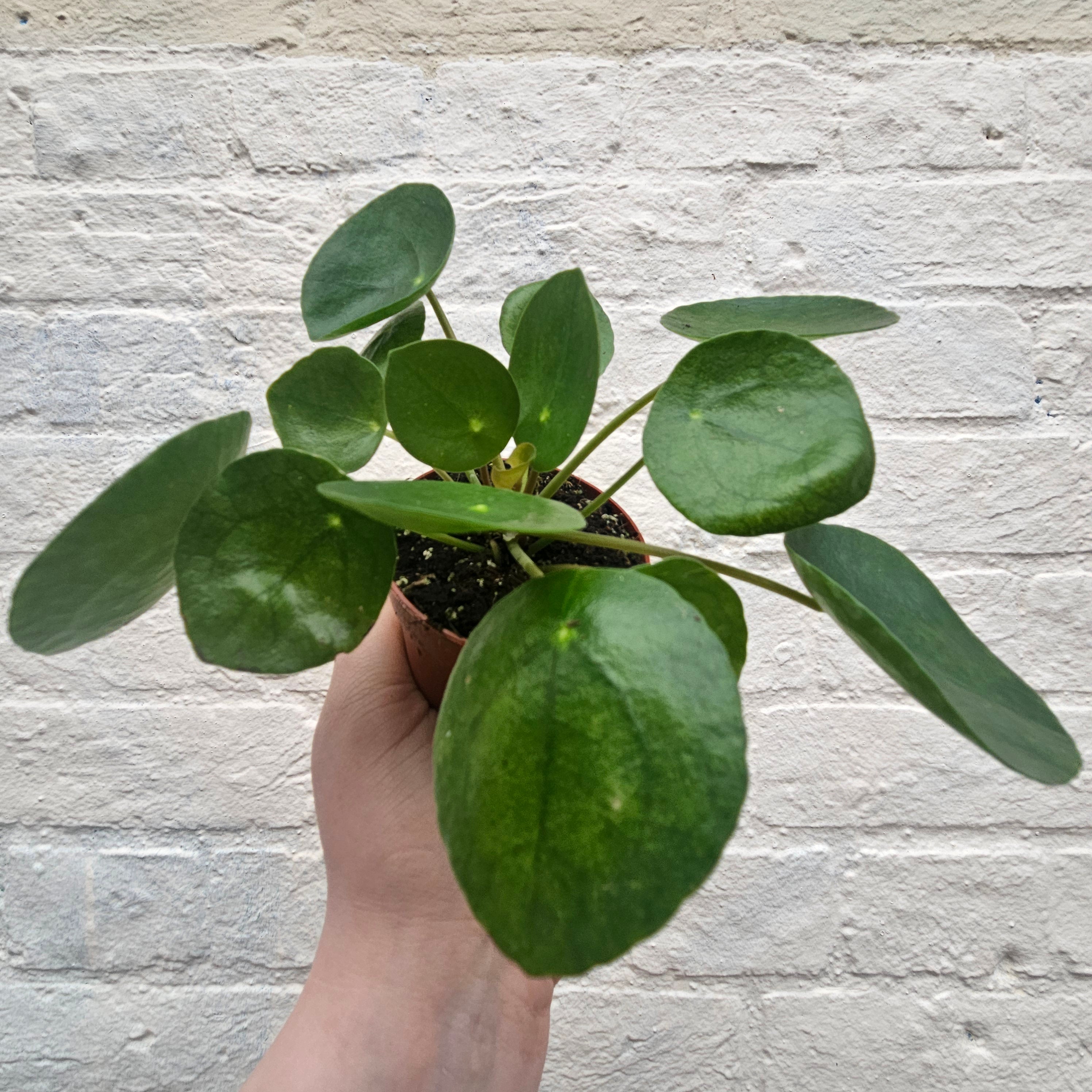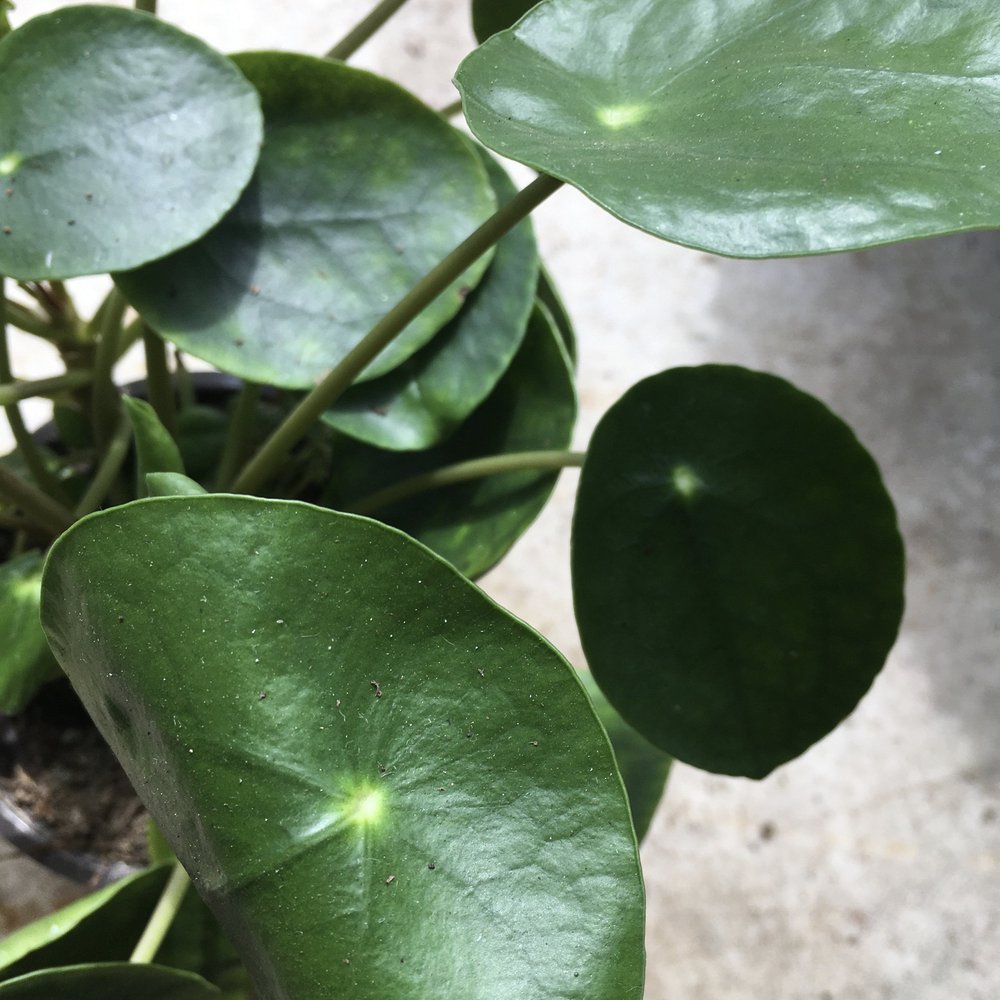The Chinese Money Plant, also known as Pilea peperomioides, is a charming and low-maintenance houseplant with distinctive round leaves. Originating from South-West China, this plant has gained popularity worldwide for its unique appearance and easy care.
Check out our wide range of Low Maintenance Houseplants from Between Two Thorns.

How to Care for a Chinese Money Plant
1. Watering:
Pilea peperomioides plants prefer slightly moist soil but can tolerate drying out slightly between waterings. Water your plant when the top inch of soil feels dry. Be cautious not to overwater, as this can lead to root rot. Allow excess water to drain and avoid leaving the plant in standing water.
2. Sunlight:
Place your Chinese Money Plant in bright, indirect light. While it can tolerate lower light conditions, it thrives in medium to bright indirect sunlight. Avoid direct sunlight, as it can scorch the leaves.
3. Temperature and Humidity:
Keep your plant in a room with a consistent temperature between 18-24°C (65-75°F). Maintain moderate humidity, but this plant is generally adaptable to a variety of indoor conditions.
4. Soil:
Use a well-draining, lightweight potting mix. A mixture of houseplant soil, perlite, bark and a touch of sand works well. Good drainage is essential to prevent waterlogged soil.
5. Fertilizing:
Feed your Pilea peperomioides with a balanced liquid fertilizer every 4-6 weeks during the growing season (spring and summer). Reduce feeding in autumn and winter when the plant is not actively growing.
How to Repot a Chinese Money Plant
Repotting is necessary when your plant outgrows its current container, usually every 1-2 years. Follow these steps:
1. Choose the Right Time:
Spring is the ideal time for repotting when the plant is entering its active growth phase.
2. Select a Larger Pot:
Choose a pot that is 1-2 inches larger in diameter than the current one. Ensure it has drainage holes.
3. Gently Remove the Plant:
Water the plant a few hours before repotting. Carefully remove the plant from its current pot, being mindful of the roots.
4. Inspect and Trim Roots:
Trim any damaged or rotting roots. If the roots are tightly packed, gently loosen them.
5. Add Fresh Soil:
Place a layer of fresh potting mix in the new container. Set the plant in the center and fill in with additional soil.
6. Water and Settle:
Water the plant thoroughly and allow the soil to settle. Avoid direct sunlight for a few days to allow the plant to recover.
Chinese Money Plants are a one of our favourites and we have a wide range of other bestselling houseplants available here.
How to Propagate a Chinese Money Plant
Propagation is a straightforward way to create new Pilea peperomioides plants. Follow these steps:
1. Offsets or Pups:
Look for small offsets or pups at the base of the plant. Carefully separate them from the parent plant.
2. Rooting in Water:
Place the offset in a jar of water, ensuring the node (where the leaf meets the stem) is submerged. Top up the water if it is getting low.
3. Transplanting:
Once roots are about 2 inches long, transplant the cutting into a small pot with well-draining soil.
4. Care for New Plant:
Treat the new plant like a mature Chinese Money Plant, following the care guidelines mentioned earlier.
How Often Should You Water a Chinese Money Plant?
Watering frequency depends on factors like temperature, humidity, and the size of the plant. Typically, water your Pilea peperomioides when the top inch of soil feels dry. Adjust the frequency in response to your specific indoor conditions.
What Is the Best Soil for a Chinese Money Plant?
A well-draining mix is crucial for Chinese Money Plants. Combine houseplant soil with perlite, bark and a bit of sand for optimal aeration and drainage. This blend helps prevent overwatering and ensures the plant's roots receive adequate aeration.
What Type of Sunlight Do Chinese Money Plants Like?
Pilea peperomioides plants thrive in bright, indirect light. Avoid direct sunlight, as it can scorch the leaves. If you notice the leaves turning yellow, it might be a sign of too little light.
How to Stop Chinese Money Plant from Dying
1. Adjust Watering:
Overwatering is a common issue. Allow the top inch of soil to dry out before watering. Ensure proper drainage to prevent waterlogged roots.
2. Monitor Sunlight:
Adjust the plant's placement if it's receiving too much or too little light. Yellowing leaves can indicate too little light as can leggy growth and loss of lower foliage.
3. Check for Pests:
Inspect the plant regularly for pests like spider mites or aphids. If present, treat them promptly with insecticidal soap.
4. Maintain Humidity:
If your indoor environment is too dry, consider increasing humidity by placing a tray of water near the plant or using a humidifier.
5. Correct Fertilizing:
Follow a balanced fertilizing schedule during the growing season, but reduce or stop fertilizing in autumn and winter.
By providing the right care, your Chinese Money Plant can thrive and become a beautiful, green focal point in your home.
